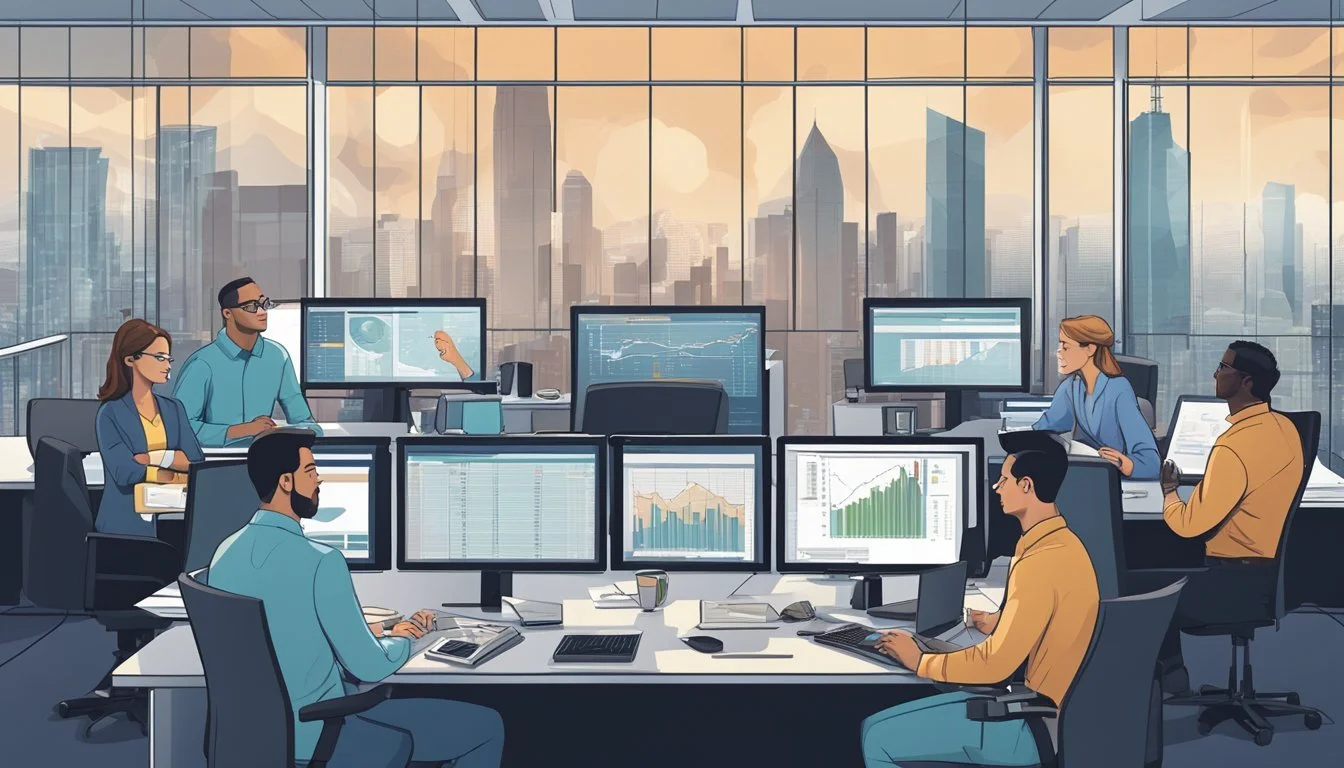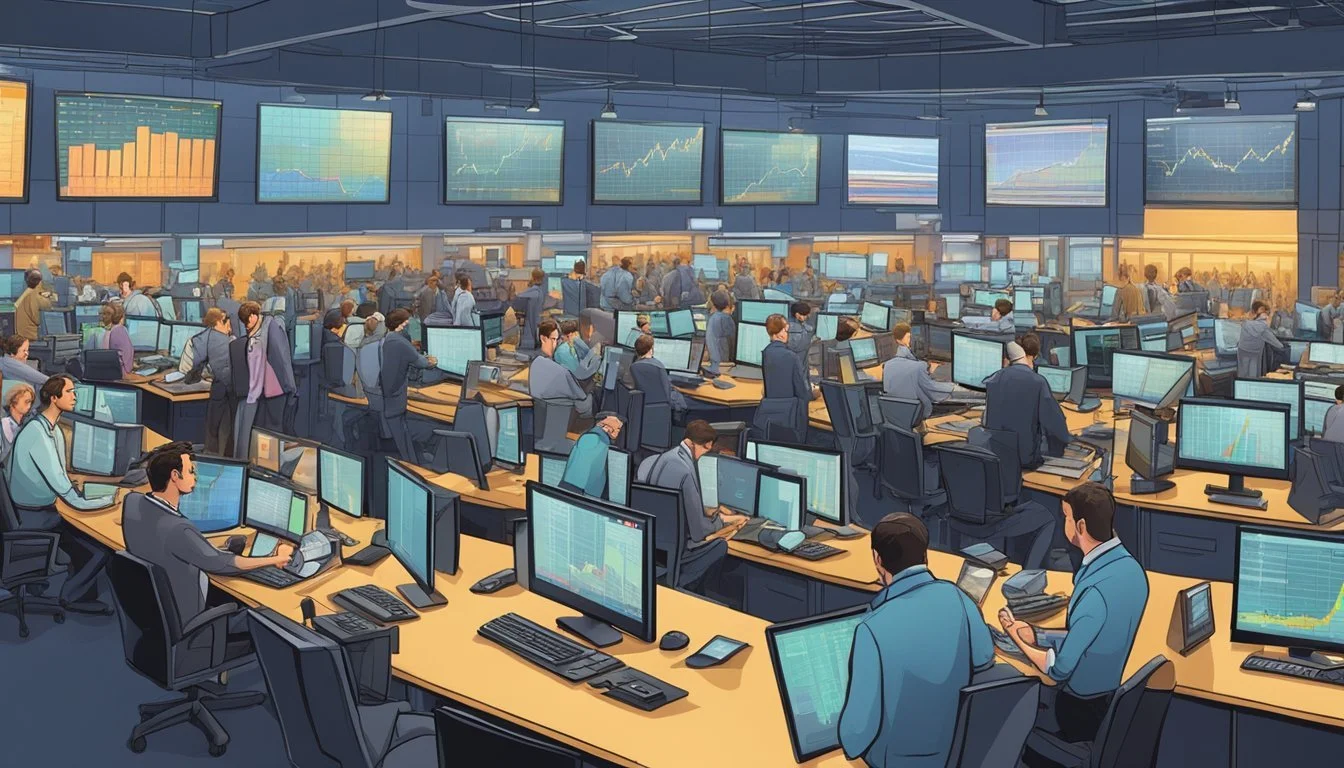Unraveling the Financial Crisis: The Real Story Behind "Margin Call"
Wall Street's 24 Hours of Panic
The 2011 film "Margin Call" offers a gripping portrayal of the 2008 financial crisis, providing viewers with a glimpse into the high-stakes world of investment banking during a pivotal moment in American economic history. Directed by J.C. Chandor, the movie features an all-star cast including Kevin Spacey, Jeremy Irons, and Paul Bettany, who bring to life the tension and moral dilemmas faced by financial professionals during this tumultuous period.
"Margin Call" draws inspiration from real events that unfolded during the 2008 crisis, capturing the essence of Wall Street's inner workings and the decisions that led to economic turmoil. While not based on a single true story, the film amalgamates various aspects of the crisis, presenting a fictionalized account that resonates with the actual experiences of many within the financial industry.
The movie's realistic portrayal of the financial world has garnered praise for its accuracy and depth. It explores the complex dynamics of risk management, ethical decision-making, and the ripple effects of high-level financial choices on the broader economy. By delving into these themes, "Margin Call" provides viewers with valuable insights into the mechanisms that contributed to one of the most significant economic downturns in recent history.
Backdrop to the Crisis
The 2008 financial crisis emerged from a complex web of economic factors and financial practices. Its roots trace back to the early 2000s and involve intricate financial instruments that played a pivotal role in the meltdown.
Historical Context
The early 2000s saw a surge in housing prices and mortgage lending. Low interest rates and relaxed lending standards fueled a housing boom. Many homeowners took on adjustable-rate mortgages, expecting to refinance before rates increased.
Banks began packaging mortgages into complex securities known as collateralized debt obligations (CDOs). These were sold to investors worldwide, spreading risk throughout the global financial system.
Credit rating agencies often gave these securities high ratings, despite the underlying risks. This encouraged more investors to buy them, further inflating the bubble.
Key Financial Instruments
Mortgage-backed securities (MBS) became a central element of the crisis. These bundled mortgages were divided into tranches with different risk levels and sold to investors.
Credit default swaps (CDS) allowed investors to insure against defaults on mortgage-backed securities. As the housing market weakened, the value of these swaps skyrocketed.
Synthetic CDOs, created from credit default swaps, amplified risks in the system. They allowed multiple bets on the same underlying assets, increasing potential losses.
These instruments created a complex, interconnected web of financial obligations. When housing prices began to fall, the entire structure became unstable, leading to the crisis.
The Genesis of Margin Call
J.C. Chandor's "Margin Call" emerged from a blend of personal experiences and astute observations of Wall Street's inner workings. The film's inception and development process reflected a commitment to authenticity in portraying the financial crisis.
Concept and Inspiration
Chandor's journey into creating "Margin Call" began in 2005 with his own foray into real estate investing. This experience exposed him to the lending practices of banks during the housing boom. It sparked his interest in the mechanics of finance and the potential consequences of unchecked speculation.
The 2008 financial crisis provided the backdrop for Chandor's narrative. He drew from real events and insider accounts to craft a story that captured the tension and moral dilemmas faced by finance professionals during the meltdown.
Casting the Realities of Finance
To bring credibility to "Margin Call," Chandor assembled a stellar cast known for their ability to portray complex characters. Kevin Spacey, Jeremy Irons, and Stanley Tucci were among those chosen to embody the high-stakes world of investment banking.
The actors immersed themselves in research, meeting with finance professionals to understand the nuances of their roles. This preparation allowed them to convey the pressures and decision-making processes of Wall Street insiders with authenticity.
Chandor's direction focused on creating a realistic atmosphere. He emphasized subtle performances that reflected the restrained emotions often found in corporate environments. This approach helped to capture the true essence of the financial world's culture.
Plot Synopsis and Dynamics
"Margin Call" takes place over a 24-hour period at a large Wall Street investment bank during the early stages of the 2007-2008 financial crisis. The film begins with a mass layoff at the firm, including the termination of Eric Dale, a senior risk analyst.
Before leaving, Eric passes a flash drive to Peter Sullivan, a junior analyst, with a warning about his unfinished risk assessment. Peter discovers the company is overleveraged in mortgage-backed securities, posing a catastrophic threat to the firm's survival.
As the night progresses, the information climbs the corporate ladder. Key executives, including CEO John Tuld, gather to address the impending crisis. They debate the ethical and financial implications of their options.
The firm ultimately decides to offload their toxic assets to unsuspecting buyers before the market learns of their worthlessness. This decision forces the characters to confront their roles in the impending economic disaster.
Throughout the film, tensions rise as characters grapple with loyalty, morality, and self-preservation. The dynamics shift as each level of management becomes aware of the situation, revealing the complexities of corporate decision-making under extreme pressure.
"Margin Call" offers a fictionalized but insightful look into the behind-the-scenes actions that contributed to the financial crisis, highlighting the human elements behind the economic collapse.
Characters and Performances
"Margin Call" features a stellar ensemble cast that brings depth and nuance to the financial drama. The actors portray complex characters grappling with moral dilemmas and professional pressures during a pivotal moment in Wall Street history.
Main Cast
Kevin Spacey delivers a compelling performance as Sam Rogers, the head of trading. His character showcases the internal conflict between loyalty to the firm and ethical responsibility. Zachary Quinto plays Peter Sullivan, a junior risk analyst who uncovers the impending crisis. Quinto conveys Sullivan's intelligence and growing unease as he grasps the magnitude of the situation.
Paul Bettany portrays Will Emerson, a seasoned trader, with a blend of cynicism and pragmatism. Jeremy Irons brings gravitas to the role of John Tuld, the firm's CEO, embodying the cold calculation of a leader facing potential ruin.
Supporting Characters
Demi Moore plays Sarah Robertson, the chief risk management officer, with a subtle mix of competence and vulnerability. Her performance highlights the precarious position of women in high-level finance. Simon Baker's portrayal of Jared Cohen, an ambitious executive, captures the cutthroat nature of corporate ladder-climbing.
Stanley Tucci brings depth to Eric Dale, a recently fired risk manager whose work sets the plot in motion. Penn Badgley and Aasif Mandvi round out the cast as junior employees, providing relatable entry points for viewers into the complex world of high finance.
Analyzing the Financial Jargon
"Margin Call" immerses viewers in the complex world of high finance, presenting a dizzying array of technical terms and concepts. The film's dialogue is peppered with financial jargon that reflects the specialized language used on Wall Street.
Key terms featured in the movie include:
Margin call: A demand for additional funds to cover potential losses
Leverage: The use of borrowed capital to increase potential returns
Mortgage-backed securities: Investment products backed by mortgage loans
Volatility: The degree of variation in trading prices over time
The characters discuss these concepts with ease, highlighting their expertise in the financial field. This authenticity adds to the film's realism and immerses viewers in the high-stakes world of investment banking.
The movie also touches on more complex financial instruments, such as:
Collateralized debt obligations (CDOs)
Credit default swaps
Derivatives
These sophisticated products played a significant role in the 2008 financial crisis. By incorporating them into the narrative, "Margin Call" provides insight into the intricate mechanisms that contributed to the economic downturn.
The film's portrayal of financial jargon serves a dual purpose. It creates an authentic atmosphere and educates viewers about the complexities of the financial system. This approach allows audiences to better understand the events that led to the crisis.
Cinematic Techniques and Narrative Devices
"Margin Call" employs masterful visual storytelling and a carefully crafted soundtrack to heighten tension and immerse viewers in the high-stakes world of Wall Street.
Visual Storytelling
The film's visual style reflects the claustrophobic atmosphere of the financial crisis. Tight framing and close-ups create a sense of confinement, mirroring the characters' trapped feelings. Low-key lighting casts long shadows, symbolizing the moral ambiguity of their decisions.
Director J.C. Chandor uses stark contrasts between the sleek, modern offices and the chaos unfolding within. Glass walls and reflective surfaces emphasize transparency, ironically juxtaposed against the opaque financial practices.
Time-lapse shots of New York City punctuate the narrative, showing the relentless pace of the financial world. These brief interludes provide a broader context for the insular drama playing out inside the investment bank.
Soundtrack and Scoring
The film's score, composed by Nathan Larson, enhances the mounting tension without overpowering the dialogue. Subtle electronic tones and minimalist piano create an underlying sense of unease.
Silence is used strategically, amplifying pivotal moments and allowing the weight of decisions to sink in. The absence of music during key conversations heightens the realism and draws focus to the characters' reactions.
Diegetic sounds of office equipment, phones, and distant city noise form a sonic backdrop that grounds the film in reality. This auditory landscape subtly reinforces the pressure-cooker environment of the trading floor.
Critical Reception and Reviews
"Margin Call" garnered widespread acclaim for its nuanced portrayal of the 2008 financial crisis. Critics praised its realistic depiction of Wall Street culture and the moral dilemmas faced by characters during a pivotal moment in economic history.
Industry Response
Financial experts lauded "Margin Call" for its accuracy in portraying the inner workings of investment banks. The film's attention to detail in depicting trading floors, risk management practices, and executive decision-making processes earned respect from industry insiders. Many Wall Street professionals noted the film's authentic representation of the pressure-cooker environment during crisis situations.
The movie's exploration of complex financial instruments resonated with those familiar with the industry. Its ability to simplify intricate concepts for a general audience without sacrificing authenticity was particularly commended. Some critics even suggested that "Margin Call" could serve as an educational tool for understanding the mechanisms behind the 2008 crash.
Public Perception
"Margin Call" received positive reviews from mainstream critics and audiences alike. The film's tight pacing and strong ensemble cast were frequently highlighted as strengths. Many viewers appreciated the movie's focused approach, which avoided sensationalism in favor of a more contemplative examination of the crisis.
The public found the film's portrayal of moral ambiguity compelling. It sparked discussions about ethics in finance and the human cost of economic downturns. Some viewers noted that "Margin Call" helped humanize Wall Street figures often vilified in popular media, presenting a more nuanced view of their motivations and struggles.
Critics praised the film's ability to create tension and drama without relying on typical Hollywood tropes. Its restrained approach to storytelling was seen as refreshing and impactful, allowing audiences to draw their own conclusions about the events depicted.
Impact on Financial and Popular Culture
"Margin Call" left an indelible mark on both financial and popular culture. The film's unflinching portrayal of Wall Street's inner workings resonated with audiences and critics alike.
In financial circles, it sparked conversations about ethical decision-making and risk management. Many professionals recognized their own experiences in the characters' dilemmas, prompting introspection within the industry.
The movie's success also brought complex financial concepts into the mainstream. Terms like "toxic assets" and "margin call" entered everyday vocabulary, increasing public awareness of the crisis' underlying mechanisms.
"Margin Call" influenced other media portrayals of the financial world. It set a new standard for realistic depictions of Wall Street, inspiring subsequent films and TV shows to strive for greater accuracy.
The film's impact extended to academic settings. Many business schools incorporated "Margin Call" into their curricula, using it as a case study to teach ethics and crisis management.
By humanizing the faces behind the crisis, "Margin Call" helped shape public perception of the event. It offered a nuanced view of the individuals involved, moving beyond simplistic villainization.
The movie's legacy continues to influence discussions about financial regulation and corporate responsibility, serving as a touchstone for debates about preventing future crises.
Comparative Analysis
"Margin Call" stands out among financial crisis films and literature for its realism and insider perspective. Other works provide valuable context and different angles on the complex events of 2008.
Similar Works in Cinema
"The Big Short" (2015) offers a complementary view to "Margin Call," focusing on outsiders who predicted and profited from the crisis. It uses humor and creative explanations to break down complex financial concepts.
"Too Big to Fail" (2011) examines the government's response to the crisis, providing a broader perspective on the events depicted in "Margin Call."
"Inside Job" (2010), a documentary, investigates the systemic corruption that led to the financial collapse. It serves as a factual counterpart to fictional portrayals.
These films, along with "Margin Call," form a comprehensive cinematic exploration of the 2008 financial crisis from various angles.
Literature on Financial Crises
"The Big Short" by Michael Lewis delves into the mortgage crisis that triggered the 2008 meltdown. It provides in-depth background on the events leading up to "Margin Call's" narrative.
"Too Big to Fail" by Andrew Ross Sorkin offers a detailed account of the crisis from the perspective of key players in government and finance.
"The Great Crash 1929" by John Kenneth Galbraith examines an earlier financial disaster, drawing parallels to modern crises.
These books provide extensive context and analysis, complementing "Margin Call's" focused narrative. They offer readers a deeper understanding of the complex factors behind financial crises.
Educational Value and Relevance
"Margin Call" offers valuable insights into the complex workings of the financial industry. The film provides a realistic portrayal of decision-making processes within investment banks during times of crisis.
Viewers gain an understanding of financial concepts like risk management, leverage, and market volatility. The movie illustrates how these factors can contribute to systemic failures in the financial system.
Through its characters, "Margin Call" explores ethical dilemmas faced by finance professionals. It prompts viewers to consider the consequences of prioritizing profits over social responsibility.
The film's relevance extends beyond its historical context. Many of the issues it addresses remain pertinent in today's financial landscape. It serves as a cautionary tale about the potential consequences of unchecked greed and risk-taking in the financial sector.
"Margin Call" can be used as an educational tool in business and finance courses. It sparks discussions about corporate ethics, regulatory oversight, and the broader impacts of financial decisions on society.
By dramatizing real-world events, the movie makes complex financial concepts more accessible to a general audience. It helps bridge the gap between technical financial knowledge and public understanding of economic crises.
Post-Release Discussions
After the release of "Margin Call" in 2011, the film sparked numerous discussions among financial experts and movie critics. Many praised its accurate portrayal of Wall Street culture and the intense pressure faced by executives during crisis situations.
Financial professionals noted the film's realistic depiction of the decision-making process in high-stakes scenarios. The movie's portrayal of risk management and the ethical dilemmas faced by characters resonated with those who had experienced similar situations firsthand.
Critics appreciated the film's tight script and strong performances. The ensemble cast, including Kevin Spacey, Jeremy Irons, and Zachary Quinto, received particular acclaim for bringing depth to their characters.
Some viewers drew parallels between the events in "Margin Call" and real-world financial crises. Discussions often centered on the similarities to the 2008 financial meltdown and the actions of major investment banks during that time.
The film's exploration of moral ambiguity in the financial sector prompted debates about ethics in business. Many questioned the characters' decisions and pondered what they might have done in similar circumstances.
"Margin Call" also sparked conversations about financial literacy. It highlighted the complexity of financial instruments and the potential consequences of their misuse, encouraging viewers to learn more about these topics.






